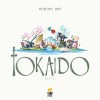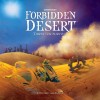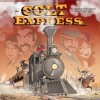drag badge here
OzBoardGamer
gamer level 2
438 xp
438 xp
followers
3
3
Use my invite URL to register (this will give me kudos)
https://boardgaming.com/register/?invited_by=brentdeacon23
profile badges
...
...
...
recent achievements

Amateur Grader
Grade 10 more reviews or tips by clicking "Yes" or "No" in response to the question "Was this helpful?"
Grade 10 more reviews or tips by clicking "Yes" or "No" in response to the question "Was this helpful?"

Gave My First Grade
Grade a gamer's review or tip by clicking "Yes" or "No" in response to the question "Was this helpful?"
Grade a gamer's review or tip by clicking "Yes" or "No" in response to the question "Was this helpful?"

Reviewed My First Game
Submit a game review
Submit a game review

Bard
Find your favorite games and share them with your friends via the social sharing buttons.
Find your favorite games and share them with your friends via the social sharing buttons.

Add Games to Your Wish List! Navigate to a game page and click on the "Want It!" button

Hmmm ... nothing yet ... maybe OzBoardGamer doesn't play games that much (or maybe OzBoardGamer doesn't realize that BG Gold can be earned by playing games (hint hint).

Hmmm ... nothing yet ... maybe OzBoardGamer doesn't really like games that much?
Player Stats
Critic (lvl 1)
160 xp
160 xp
Explorer (lvl 0)
95 xp
95 xp
Professor (lvl 0)
20 xp
20 xp
Reporter (lvl 1)
125 xp
125 xp
About Me
Helping you find your next favourite game! We have all the latests and greatest on board games. Check out our News, Reviews, Top 10s and more!



















































Captain SONAR
It seems like you haven’t seen the sky in years. Your days pass in a seamless blur, working alongside your fellow crew members in a tiny metal canister surrounded by the pressing depths of the ocean.
Captain Sonar is an innovative real-time game that challenges two teams to take their submarines head-to-head in a thrilling battle. Your ultimate goal is to find and destroy your opponent’s submarine, but this task is far more difficult that it may first appear. Your entire crew must work together to chart a course, charge systems, locate the enemy, and keep your own submarine fully operational. Communication and teamwork can lead you to victory, but if you fail to cooperate, you’ll be sunk to the bottom of the ocean!
Luck:
While the game hinges on a captain of each team taking control, the game avoids this becoming the Alpha gamer problem. Each player has a job to do and while the Captain has most of the control, this can be thrown away with the decisions made from the other officers. An engineer can destroy the captain’s getaway plans with a wrongly crossed off component.
Strategy:
In Captain SONAR, you will need to keep your wits about you. Just finding the other ship isn’t enough to win, the teams captain is going to need to think ahead to make sure that when they DO find the enemy ship, they are ready to both inflict damage on them and get away if things get hairy. You are going to need to work together with your whole team to get the job done.
Complexity:
The game has a lot going on and it is worth while having a captain on each team that knows the mechanics for the first few runs, the game is incredibly intuitive. All 4 roles are very diverse and you will find players wont take long to understand what they are expected to do and how best to do it. This is a party game with a competitive, strategic aspect.
Replay Value:
While the game can take upwards of 30 minutes, especially when playing the turn based mode, this game will have you and your friends frantically shuffling the roles and getting ready for the next round. Because Captain SONAR really is at its best with a full 8 people, you may find plays to be few and far between, you will be taking any opportunity to crack it out!
Components:
The games components are quite simple. You get a few boards to block off the view of the other team, some plastic sheets to draw on and some dry erase markers to do so. The design is beautiful and you won’t find yourself upset staring at for a good 30 minutes plus. That being said, if you are expecting some beautiful pieces to play with, you may be sorely disappointed.
Learning Curve:
The game suggests a run through in the Turn-By-Turn mode for the first game and this is almost a necessity. Players will be asking questions of what they can do and what should be done and while once you know the core of the game everything is very intuitive and easy to remember, without some guidance on each team this may take a few games to learn.
Scaling:
This game is best at the maximum 8 players. While you can get away with 6-7 by the captain doubling up with the first mate role, this takes away from the teamwork that Captain SONAR wishes to utilize. If you are going to play this game, I strongly suggest this be reserved for the very specific group so that you can get the most out of it.
Theme:
The theme here is very lightly put into the game, but that is actually a good thing. Captain SONAR wants you to feel like you are at the command of a submarine in the middle of a deceptive game of cat and mouse. I think this game could be transformed and reinvented by a simple change of theme (Did someone say Star Trek?).
Final Thoughts:
Captain SONAR is a fantastic party game, if your party consists of you and 7 friends. The game can easily be expanded by simple map packs and I won’t be surprised if we see that soon. If you want invest in a unique and engaging game, give this one a look, You will not be disappointed!